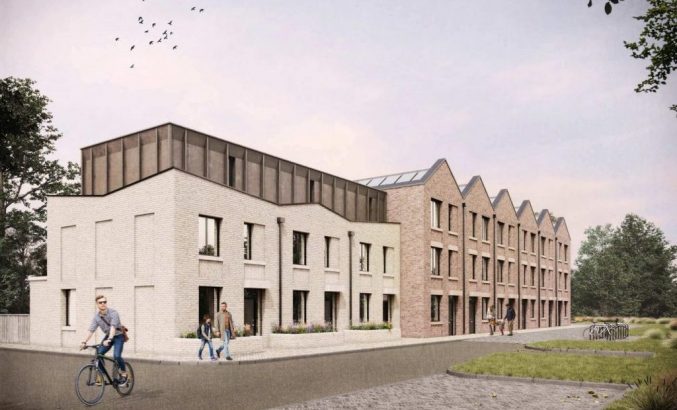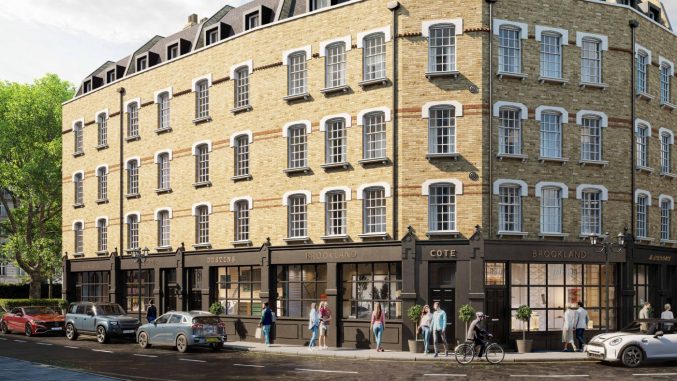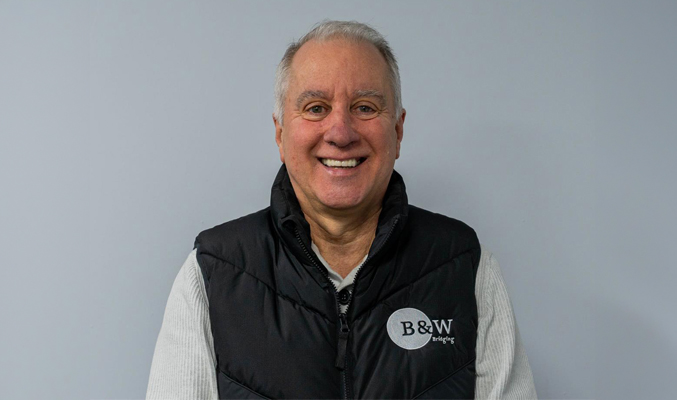Aiming institutional firepower where it does most good
By David Craik

In these times of uncertainty, we all need support to keep powering forward.
That includes lenders, brokers and clients eager to continue developing and refurbishing.
For short-term property lender Atelier Capital Partners, only formally launched last January, the strong shoulders it used to boost growth and keep the UK building came in the form of financial backer and investor M&G Investments.
“The investment thesis of Atelier is to build an institutional grade platform and attract institutional grade capital into the short-term and development sectors,” explains Martin Gilsenan, director of origination at Atelier. “There was a gap in the market for institutional quality and commitment. That really shone through around the first lockdown last March. That was the catalyst we needed.”
Up to that point he explains that Atelier, which provides short-term property finance for residential and commercial projects from land acquisition and refurbishment to development and auctions was trying to make its voice heard in a crowded market.
“The market was enjoying the ‘Boris Bounce’ in early 2020,” Gilsenan states. “It was a very hot, competitive sector with loan to values increasing and rates reducing. But the lockdown re-set the market and brought our future forward.”
Atelier reduced LTVs for bridging and development finance to 65% but steadfastly committed to keep lending.
“We were getting feedback from brokers that there was a lot of virtual lending going on. So, a lot of lenders were saying that they were lending but they really weren’t,” he says. “We were one of the few lenders who backed up their words with actions. News travels quickly in the development space and our institutional backing and ability to complete deals brought us to the attention of a wider group of developers and brokers.”
Gilsenan, who joined the group in July as the housing market was buoyed by the end of lockdown and Government measures such as the Stamp Duty Holiday, says its niche lending style also won admirers.
It is particularly keen on lending to SME property developers striving to make an environmental or social difference through urban regeneration, upcycling or brownfield development.
Atelier’s minimum loan is £1million with a maximum of £10million. Following the lockdown drop to 65%, LTVs have returned to 70%.
“Our bridging has a very specific development bent to it,” he says. “We support developers through the whole process including understanding the inconsistencies around planning policies and how to unlock and create value. We can also occasionally support experienced developers to do land without planning at reduced LTVs of 50%.”
He adds that customers will not see a product grid on the Atelier website. “We don’t do a set of products. Instead, we structure each loan deal individually with the developer and supporting broker to come up with a solution appropriate to all parties. It’s bespoke because no two deals are ever the same.,” Gilsenan explains.
This singular approach has responded well to changing customer and social trends in the pandemic.
“Valuations became even more paramount. You had to get underneath the developer’s end product and try to understand whether the numbers made sense in this new environment,” Gilsenan says. “So, a permitted development scheme that may have been perfectly fine in 2019 wouldn’t have the same appeal now if it didn’t, for example, have sufficient space for people working at home. PD schemes will have to adapt. You will need to ask more questions such as ‘What’s being built, how big are the units and will people want to live there? You will need to work harder on a deal-to-deal basis to understand your security.”
There will, he argues, be an enhanced focus on deals which support the environment and communities.
“We recently completed a deal where we supported a developer’s scheme to turn a 20-year-old dormant petrol station into 6 houses,” he explains. “We supported him through the process including having to decontaminate the site. It was a real example of how a development can support the local community by improving the visual and physical environment.”
Another example is £11.5million of acquisition funding for the redevelopment of a former care home in North London including affordable housing and the £6.2million development of eight highly energy efficient townhouses on a brownfield site in Crystal Palace, Southeast London.
The family homes, built by the sustainable developer Placemakers London, are 40% more energy efficient than current Building Regulations require.
Gilsenan believes further community enhancing projects can be supported on the suffering UK high street.
“Some of the outlets owned by collapsed retailers won’t automatically be replaced by their peers. There is a precedent for people living in town centres and we will be backing innovative developers who are looking to do something imaginative with this stock,” he says. “Developers are seeing opportunities. They stepped into the breach and continued to get sites built during the pandemic. This is an incredibly resilient market notwithstanding the fragility of the wider economy. There are still grounds for optimism.”
Given the demand Atelier is focusing on improved customer communication.
“Technology runs in our veins. During the lockdown we accelerated a new internal digital platform focusing on the borrower and broker,” he explains. “The portal will offer more transparency for customers such as finding out the exact stage an application has reached. It will ensure that we don’t ask for the same information twice and help us make better and faster decisions.”
However, technology will never replace physically going to see a client on site.
“You need to fully understand the developer and their product. What are they trying to do and why?” he says. “You need to assess their ability to support the loan and whether they have a strong asset base”
That, he warns, goes two ways in the development world. Something bridging lenders should carefully consider.
“Bridging lenders are going into unchartered territory when they move into development finance,” Gilsenan says. “Developers need to be careful and ensure that the lender has the funding model to support their development not just on day one but throughout the build process. This is a hot topic. We’ve been approached by brokers who have developers unable to complete their work. It is not an ideal scenario for anybody and could increase in the months ahead.”
What of Atelier’s future?
It passed the £100million lending milestone in January and has a target of £250million assets under management this time next year.
“There are potential economic challenges ahead as the Government’s furlough scheme comes to an end,” Gilsenan says. “But we have a strong ambition. It is not scale at any price. It is about using our institutional backing and entrepreneurial flair.”

David Craik is a freelance journalist writing news, feature articles, blogs and guides for national newspapers and magazines. His main areas of interest include finance, property and investments.










You must be logged in to post a comment.